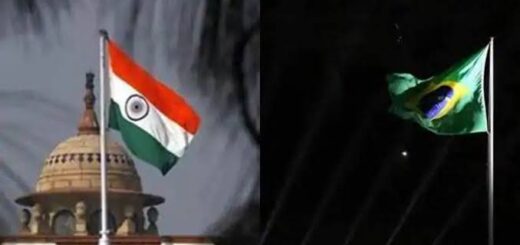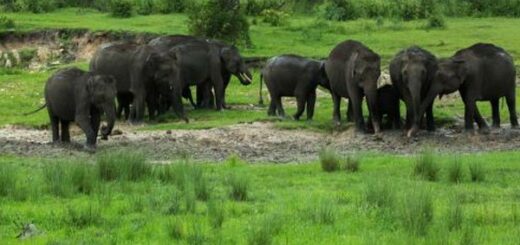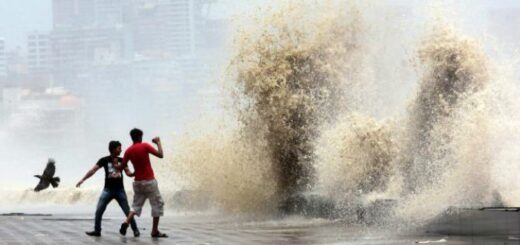National Current Affairs – UPSC/KAS Exams- 29th June 2019
President’s rule
Topic: Indian Polity
In News: The Lok Sabha approved the extension of President’s rule in Jammu and Kashmir for another six months. Home Minister assured the House that “democratic, free and fair Assembly elections will be held in the State by the year-end”.
More on the Topic:
- The Lok Sabha also cleared the Jammu and Kashmir Reservation (Amendment) Bill, 2019, to replace an ordinance issued by the previous government.
- With this, people living along the International Border (IB) in Jammu and Kashmir will get the benefit of reservation in direct recruitment, promotion and admission to professional courses on a par with those living along the Actual Line of Control (ALoC).About President’s Rule:
President’s Rule in Jammu and Kashmir:
- In all states of India, the state government’s failure results in President’s rule.
- The process is slightly more nuanced in Jammu and Kashmir where not the President’s but Governor’s rule is imposed.
- The Constitution of India grants special status to Jammu and Kashmir among Indian states, and it is the only state in India to have a separate Constitution and regulations specific to it.
- Since the state has a separate Constitution six months of Governor’s rule is compulsory under Article 92 of the Jammu and Kashmir Constitution, under which all the legislature powers are vested with the governor.
- After this period of 6 months presidents rule (Art 356) can be applied.
- The President’s rule in other states of India is imposed under Article 356 of the Constitution of India.
- Under the Governor’s rule, the State Assembly is either kept in suspended animation or dissolved.
- If it is not possible to restore the state machinery before the expiry of the six-month period, the provision is extended.
- The Governor’s rule was imposed on the state for the first time in March 1977.
Source: The Hindu
Dragonfly Drone
Topic: Science and Technology
In News: On the 180th death anniversary of Maharaja Ranjit Singh, the legendary ruler of Punjab, a statue was unveiled at the Lahore Fort.
More on the Topic:
- NASA said that it’s sending a drone called Dragonfly to explore Saturn’s largest moon, Titan.
- Using propellers, the drone will fly and land on several spots on the icy moon to study whether it can support microbial life.
- The nuclear-powered mission is part of NASA’s competitive New Frontiers program, which launched the New Horizons spacecraft that became the first to visit dwarf planet Pluto.
- Titan, the second largest moon in the solar system, is an icy world whose surface is completely obscured by a nitrogen-based golden atmosphere, four times denser than Earth’s.
- It will explore Titan’s diverse environments from organic dunes to the floor of an impact crater where liquid water and complex organic materials key to life once existed together for possibly tens of thousands of years.
- The rotorcraft will hop on the moon’s surface in a series of leapfrog flights of up to eight km in order to take samples in diversified locations.
- It will eventually fly more than 175 km and become the first vehicle ever to fly its entire science payload to new places for repeatable and targeted access to surface materials.
Source:The Hindu
Current account deficit tapers
Topic: Economy
In News: The country’s current account deficit (CAD) for the January-March period narrowed to 0.7% of the GDP, or $4.6 billion, compared with 1.8%, or $ 13 billion recorded during the same period of the previous year. The deficit narrowed due to a lower trade deficit.
More on the topic:
- The country’s foreign exchange reserves hit a record high. The increase in foreign currency reserves is due to an increase in foreign currency assets of similar magnitude.
About Current Account Deficit:
- The current account measures the flow of goods, services and investments into and out of the country. We run into a deficit if the value of the goods and services we import exceeds the value of those we export. The current account includes net income, including interest and dividends, and transfers, like foreign aid.
Why does it matter?
- A current account deficit represents negative net sales abroad. Developed countries, such as the United States, often run deficits while emerging economies often run current account surpluses. Impoverished countries tend to run current account debt.
- A country can reduce its existing debt by increasing the value of its exports relative to the value of imports. It can place restrictions on imports, such as tariffs or quotas, or it can emphasize policies that promote export, such as import substitution, industrialization, or policies that improve domestic companies’ global competitiveness.
- The country can also use monetary policy to improve the domestic currency’s valuation relative to other currencies through devaluation, which reduces the country’s export costs.
- While an existing deficit can imply that a country is spending beyond its means, having a current account deficit is not inherently disadvantageous. If a country uses external debt to finance investments that have higher returns than the interest rate on the debt, the country can remain solvent while running a current account deficit. If a country is unlikely to cover current debt levels with future revenue streams, however, it may become insolvent.
Source: The Hindu
Data Localisation
Topic: Science and Technology
In News: Prime minister have stressed that data was a “new form of wealth”. The U.S. and its allies would need to take into account “the requirements of developing countries” on the issue. This comment was a reply to Mr. Trumps comment which stated “The United States opposes data localisation and policies, which have been used to restrict digital trade flows and violate privacy and intellectual property protections.”
More on the Topic:
- Data localization is a sensitive issue the world over and more so in India, given that this is a country of 1.3 billion people with over 1 billion mobile users. With technology developing rapidly, more and more devices becoming smarter and the Internet of Things taking over, a genuine concern around leakage of private data has gained ground.
- Data localization is the act of storing data on any device that is physically present within the borders of a specific country where the data was generated.
Why data localization is necessary for India:
- For securing citizen’s data, data privacy, data sovereignty, national security, and economic development of the country.
- The extensive data collection by technology companies, has allowed them to process and monetize Indian users’ data outside the country. Therefore, to curtail the perils of unregulated and arbitrary use of personal data, data localization is necessary.
- Digital technologies like machine learning (ML), artificial intelligence (AI) and Internet of Things (IoT) can generate tremendous value out of various data. It can turn disastrous if not contained within certain boundaries.
- With the advent of cloud computing, Indian users’ data is outside the country’s boundaries, leading to a conflict of jurisdiction in case of any dispute.
- Data localization is an opportunity for Indian technology companies to evolve an outlook from services to products. International companies will also be looking at the Indian market, and this will benefit the growth of the local ecosystem.
- More data centres in India could mean new, power-hungry customers for India’s renewable energy market. That means Data localisation could boost India’s renewable energy.
The Policy Frame Work:
- The Reserve Bank of India has stated that all system providers shall ensure that the entire data related to payment systems operated by them are stored in a system only in India to ensure better monitoring of payment service operators.
- Barring limited exceptions, telecom service providers are not allowed to transfer user information and accounting information outside India.
- Goals set in the Draft National Digital Communications Policy 2018, and the Guidelines for Government Departments for Contractual Terms related to Cloud Storage 2017, draft e-commerce policy and the draft report of the cloud policy panel show signs of data localization.
Model Mains Question: Data is a “new form of wealth.” Comment.
Source: The Hindu
5G
Topic: Science and Technology
In News: On the issue of 5G technology, where the U.S. has demanded that countries ban Chinese telecom major Huawei’s 5G network because of its ability to spy on them, Mr. Modi appeared to have given Mr. Trump no assurances.
More on the Topic:
- According to its 5G rollout plan, India is preparing to begin technology trials in September, and while that deadline may be postponed, India has not yet decided on whether to include Huawei from the trials. If India drops the company from consideration, Beijing has made it clear it would protest the decision strongly.
About 5 G Technology:
- 5G is wireless communication technology based on third-generation partnership project (3GPP).
- It is next generation mobile networks technology after 4G LTE networks.It is expected to offer enhanced mobile broadband.
- The 5G technology will offer far greater upload and download speed available at present.
- High data speed offered by 5G network will help cloud systems to stream software updates, music, and navigation data to driverless cars.
- Moreover, it holds the key to growth of artificial intelligence (AI) systems and enhance IoT.
- As per the OECD Committee on Digital Economic Policy, 5G technologies rollout will help in increasing GDP, creating employment and digitizing the economy.
- The global roll-out of 5G commercial services is expected by 2020.
Prospects for 5G in India?
- High-speed broadband remains the top priority for telecom service providers, the government and the citizens alike.
- 5G will significantly contribute in transforming everyday lives of Indians by resolving real issues within e-healthcare, e-education, infrastructure and e-governance.
- This technology would entail accelerating the BharatNet programme for deploying connectivity infrastructures.
Source: The Hindu
Diphtheria
Topic: Health
In News: Due to Vaccine hesitancy all over the world the cases of Diptheria have been going up in the last few years.
More on the Topic:
- It is an infectious disease caused by the bacterium Corynebacterium diphtheria.The infection spread only among humans.
- The primary infection affects the throat and upper airways.It is spread by direct physical contact.
- Signs and symptoms include low fever, swollen glands on the neck, Swelling of soft tissue in the neck, fast heart rate.It particularly affects children aged 1 to 5 years.
- In 1978, India launched the ‘Expanded Programme on Immunisation’ which covers BCG (against TB), DPT (diphtheria, pertussis, tetanus) and cholera.
- In 1985,it was converted to the ‘Universal Immunisation Programme’ (UIP) which also included DPT.
- The coverage of diphtheria vaccine is around 78% now.This has reduced the mortality and morbidity of diphtheria dramatically.
- However, Vaccine hesitancy is a growing all over the world.So cases of Diptheria have been going up in the last few years.In some states, majority of the cases were among school-going children and adolescents.
- This reflects low coverage of primary diphtheria vaccination.Declining immunity acquired by vaccination or naturally also a cause for the rising recent numbers.
Source: The Hindu



















